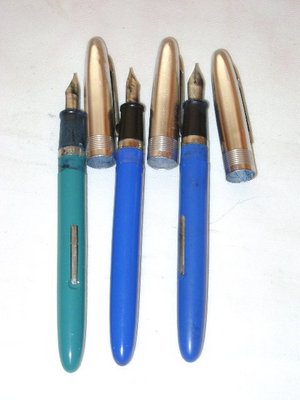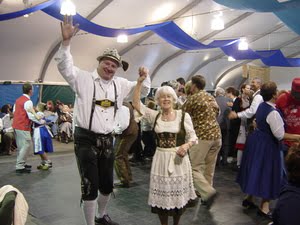We started raising veal calves over 20 years ago. I still remember visiting the barn we were going to rent. It had 192 pens. I kept saying over and over 192 calves, a 192 calves. I could not even imagine 192 calves in a barn all at once. It was just so unreal to me. My husband wanted to remodel our barn for Veal Calves and I said why don’t we rent a barn first to see if we like raising calves. So we rented from the man that would be our feed manager. When we started everything was a learning process.
First came the night that a section of the calves would be shipped in(after about 4 days the barn would be full). The truckers were buying them from all over the state and trucking them in. My husband and the trucker would have to unload them and we all would take a calf and put it in a pen. There was a chain in front of every calf with a hook on it and this was to go around the calves neck, loose enough as not to choke the calf and yet short enough so the calf would not jump out the front of the pen. I at first thought this was mean to have them tied up. But after evaluating the situation, I realized it was for the calves safety. They were able to move around in the pens, stand up lay down, everything they needed to do. They just weren’t able to run around the barn. Now can you imagine having to feed 192 calves if they were all running around the barn. For one you would get trampled when they knew it was feeding time, another you would not be able to tell if any of the calves were sick. These calves were fed every 12 hours, and treated like royalty.
So we had to know how many bags of feed to add to the water, and how hot the water had to be. We had to add so many gallons of hot water, and then cold. The powdered feed was added to the hot water in a bulk tank with a motor and a paddle that would mix the feed. We would take a testing thermometer and see how hot the water was. There was a meter on the water valve that said how much water we had put in. We had to have X amount of feed per calf per pen. We also had to add medication, as the calves were just shipped and they get stressed. They also get shipping fever about 3 to 4 weeks after they have been in the barn. They get scours, heavy breathing, and can run a fever and we had to know exactly what to do to treat them.Once the feed was mixed and ready to go, we would switch on the feed pump, which would pump the liquid feed through a large rubber hose that was see through. On the end of each row of calves there were rollers which would make it easier for pulling the hose. We would start in row A then row B,C and D. One of us went ahead of the person feeding and put down 3 gallon plastic pails in a cut out board that would hold the pails. Each pail hung on a long piece of wood over our heads, well at least over mine. I would take the pail and put it in the holder, and some of the calves would get up and some didn’t as they were anywhere from 1 week to 1 month old. Many did not know yet how to drink milk. After the milk solution was put in the pail using the old gasoline nozzle’s that you use to put gas in your cars, with a stick on the end that could be raised or lowered for the amount of feed needed. To figure that out we would hang one pail on a scale, and shoot in the amount of feed needed, and the stick on the nozzle would be adjusted to that level so all the calves go the same amount of feed. Now it was time to get the calves up that didn’t know how to drink and to use your fingers for them to suck on while there head was lowered toward the milk. Some would take to drinking right away or at least after a few feedings. Others would take weeks. Then we would use a floating nipple for them to use. It was so strange as they got older they would forget how to drink or that they didn’t have to put there heads way down in the pail. You had to watch or you would get sprayed with milk when they came up for air. It definitely made one chuckle.
After all the calves were fed, which for the first week took around 3 or 4 hours, then it was time to treat the ones that had scours, and check to see if any were sick. I had a tablet, and wrote down every calf was treated and what for. Each pen had a number written on the front so we could identify the calf. If they were treated in the morning it was usually followed through until the symptoms were gone. Our son and daughter also fed the calves when Dad was at this job.
When we got into the barn and after the calves knew how to drink. I would say OK you take that end of the barn and You take the other side of the barn. This kept them from goofing around or fighting, like all kids do. We would get the feed all mixed up and head out to feed, one of the kids would put the pails down and they other would pick them up after they were done drinking so they would not keep sucking and end up bloated. When the calves first came in the barn they were adorable, we all had our favorites but, by the time they were ready to be shipped out at 4 to 4 1/2 months they were no longer cute and adorable, they were almost the size of a full size steer. We were actually glad to see them being shipped out.
After the feedings we would take a water hose with a spray nozzle on it and wash down the floors because if we didn’t the floors would get slippery from the dripping pails that were up on the sticks. This was for our safety as well as to keep rodents away. With feeding out of the way it was time to clean up the bulk tank, and pull down bags of feed that would be needed for the next feeding. Preparing ahead made everything go smoother. We would be able to start and finish feeding in 45 minutes. I would always set a record for the kids when we got in the barn. OK, it is 8:00 we will be out of the barn at 8:45. That was with mixing the feed, feeding, treating, spraying down the floors and checking to see if any calves were sick. When one was feeding the other would put pails down, and the other would be looking at each calf to see if they were ill, and if they were jotting down the pen number so we could treat them before we left. If any injections were needed I would leave a list for my husband as he would stop at the barn on the way home.
The Veal Calves at that time were kept in a dark barn, no windows. There were huge fans put in the concrete walls that would pull in fresh air, as well as circulate out the bad air. I wasn’t a fan of no windows and everything being so dark. But, that is the way our Feed Manager had his building set up. Once this batch was fully grown which was between 4 to 4 1/2 months my husband would hire a few guys to help him load calves. They usually could get them loaded in about 2 hours. The only bad thing was the barn was very close to the road, so the County Sheriff would have to be called so that they could stop traffic as the truck blocked 1/2 of the highway. The Officer would let so many cars through at a time.
When the calves were all loaded it was time to turn on the water sprinklers on to soak down the pens to be cleaned. This usually would take about 1 to 2 weeks to clean. The calf pens were about 2 feet off of the ground and the floor in each pen was slotted so that any animal waste would drop through. The floors had been cemented on a slant so that the waste would go into a section that would be flushed with water and the waste would go underground and into the underground holding tank that our Feed Manager had. Once the barn was clean it was time for our Feed Manager to raise the Winter batch of calves. He would hire my husband to raise them. Then in Summer we would rent the facilities, and pay the Feed Manager a percentage of our weekly check.
We had finally decided to remodel our dairy barn into a Veal Operation. With a loan from my Aunt we were able to afford to do the concrete work, put pens in and purchase pails, clips and anything else we needed. We already had our bulk tank from when we milked cows. So we were all set to go.
Over the years things have changed for one. When we remodeled our barn all the windows stayed uncovered. We wanted light in the barn. Fans were put in, and doors would be open in the summer when it was really nice out. We also, cut back on medications. Once the calves were in the barn 1 month they no longer got any medication, unless it was absolutely necessary for the survival of the calf. We started with 120 calves in our barn and eventually we added another section in the hay barn and now have a total of 156. Ours is a small operation and we made enough money to be able to pay our bills and even save some money. We have gone from powdered feed to liquid feed that has to be trucked in every couple of days. We have a huge bulk tank cooler that the milk is stored in. When it is time to feed, it is pumped from storage to the mixing bulk tank unit and hot water is added. Then the process of feeding starts all over again.
Right now we are at the end of a batch of calves that will be shipped out in a week. The price of liquid feed has sky rocketed so much because the government is taking the milk by product and shipping it over seas. So we do not know whether the company that we labor lease through will fill us again or not. As we already know that our feed cost is $26,000 higher than last time. It is unfortunate that we may have to give up raising calves. It has gotten us through many tough years, and it also kept us close as a family. The kids are married, my son is a Dairy Farmer, he just purchased his heard after being a Dairy Herdsman for 11 years. My daughter is an accountant. At shipping time my son, son-in-law, my husbands Uncle and 2 cousins, all come to help load calves. It is a nice time for them all to get together, to work and to catch up. After the calves are shipped, my husband will be turning on the sprinklers to clean the pens possibly for the last time.




